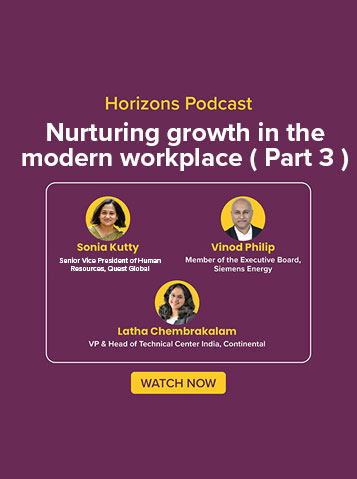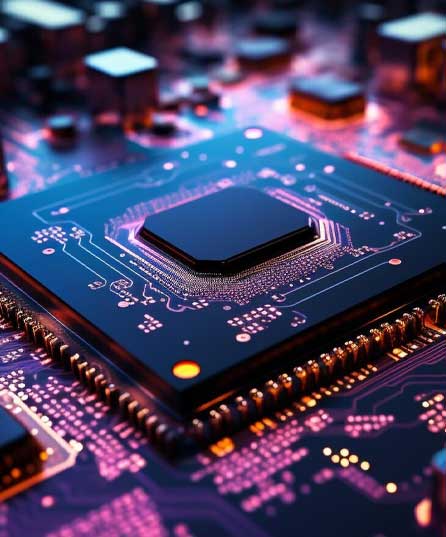
Executive Summary
The semiconductor equipment manufacturing landscape has undergone a fundamental transformation. As industry demand accelerates, specialized semiconductor equipment manufacturers face tremendous opportunities alongside existential challenges. The dual pressures of accelerated innovation cycles and stringent compliance requirements threaten to leave emerging manufacturers behind as they compete with multinational giants possessing vastly superior resources. This research article examines how a fundamental shift in automation architecture, specifically through solutions like ICE Automate, is leveling the playing field for specialized manufacturers.
The new semiconductor reality
Traditional equipment delivery cycles of 18-36 months are now fundamentally misaligned with the innovation velocity of chip designers and manufacturers who are racing to capitalize on AI and high-performance computing opportunities. According to the KPMG Global Semiconductor Industry Outlook, 65% of semiconductor executives identified accelerating time-to-market as their highest strategic priority, ahead of both cost reduction and technical performance improvements.
This acceleration imperative is driven by converging factors: technology acceleration, elevated customer expectations, competitive pressure from new market entrants, capital efficiency demands, and extending equipment lifetime.
Why software can’t be an afterthought anymore
The semiconductor industry’s vulnerabilities became apparent during the global pandemic. According to a 2024 Sourceability report, semiconductor shortages cost the global automotive industry alone more than $500 billion. This revealed something structural: the semiconductor equipment manufacturing model was built on assumptions of stability that no longer hold true.
The industry’s traditional linear development approach, designing hardware first with software considerations secondary, creates inherent rigidity that hampers adaptability in today’s dynamic market. According to SEMI’s Equipment Automation Technology report, software development now accounts for approximately 35-40% of total R&D spending for semiconductor equipment manufacturers, up from just 15-20% a decade ago.
Accelerating development cycles
According to the KPMG Global Semiconductor Industry Outlook, 65% of semiconductor executives identified accelerating time-to-market as their highest strategic priority. This imperative is driven by technology acceleration, customer expectations for aligned roadmaps, competitive pressure from new entrants, capital efficiency demands, and equipment longevity requirements as fabs extend lifecycles requiring decades-reliable software.
For companies without massive R&D budgets, this presents both challenges and opportunities. Those who adapt their development processes can compete effectively despite resource limitations.
The cost of delay
The financial implications of development speed are profound. According to Boston Consulting Group, companies that achieve top-quartile time-to-market performance generate, on average, 30% higher profit margins than competitors with average development timelines. This impact compounds through premium price erosion, opportunity costs, and market window limitations.
ICE Automate’s architecture disrupts traditional development cycles through pre-validated compliance modules that compress factory acceptance testing from months to weeks. ICE Automate’s modular architecture was developed by veterans with deep software, expertise in SEMI standards, and semiconductor equipment expertise. This ensures reliability, maintainability, and configurability. An optical inspection tool manufacturer from North America proved this transformation: their GEM implementation dropped from months to weeks after adopting ICE Connect. Quest Global’s engineering support and ICE Host simulator enabled complete compliance verification before shipment, accelerating customer qualification dramatically.
Redefining time-to-market
Compliance with the latest freeze of SEMI EDA consumes software development resources, yet many tools fail factory acceptance testing due to implementation inconsistencies. ICE Automate disrupts this through pre-validated compliance modules that compress testing from months to weeks. An inspection tool manufacturer from North America proved this transformation: their GEM implementation dropped from months to weeks after adopting ICE Connect, enabling specialized manufacturers to capture previously inaccessible market opportunities.
Software as key differentiator
Software development now accounts for 35-40% of total R&D spending for semiconductor equipment manufacturers, up from 15-20% a decade ago, driven by hardware commoditization and demands for efficiency, data integration, and value-added services. For specialized manufacturers, software capabilities can be acquired strategically through partnerships, enabling access to enterprise-grade capabilities without extensive internal development teams.
The user experience revolution
Consumer technology has permanently altered expectations for industrial interfaces. Fab operators reported 27% higher satisfaction and 19% fewer operational errors with modern, intuitive interfaces. Benefits include 35% reduced operator training time, 24% fewer setup errors, and enhanced remote operation capabilities. These improvements provide operational advantages that extend far beyond aesthetic appeal.
Solving the R&D cost puzzle
Traditional automation platforms impose a double financial burden: substantial upfront capital expenditure followed by ongoing compliance maintenance costs that divert precious R&D resources away from differentiation. ICE Automate’s per-equipment licensing model fundamentally realigns these economics, converting what was once a capital-intensive investment into an operational expense that scales with success.
Case Study:
A North American etch equipment manufacturer with limited resources used ICE Automate to reach market within 6 months, securing repeat orders and driving substantial revenue growth. This demonstrates how the right software partnership transforms financial constraints into competitive speed for specialized manufacturers.
Build vs. Buy strategic decision
According to the Standish Group’s CHAOS report, only 31% of software development projects were delivered on time, on budget, and with the required features. In complex technical environments like semiconductor manufacturing, this success rate drops to just 16.2%. The full cost of internal development extends far beyond initial programming expenses, including specialized expertise acquisition, ongoing maintenance, and knowledge dependency risks.
The semiconductor equipment sector has begun recognizing these advantages. According to PwC’s Technology Forecast, 72% of industrial technology companies are actively shifting from capital-intensive in-house development to per-equipment licensing technology acquisition models.
Compliance as competitive advantage
The semiconductor equipment industry operates within an extensive framework of standards. According to SEMI’s official standards catalog, the organization maintains over 1,000 active standards documents across 24 technical domains. The latest EDA Freeze 3 standards mandate requirements that disproportionately burden emerging manufacturers with limited compliance engineering resources.
ICE Automate transforms compliance from burden to advantage through pre-validated libraries that implement latest SEMI standards out of the box. The built-in SEMI standard compliance validator automatically identifies potential compliance issues during development rather than during customer factory acceptance testing.
Engineering support ecosystem
In the semiconductor equipment market, the product itself is only one part of customer value. Extending equipment lifetime depends on engineering services for maintenance, sustenance and refurbishing. According to VLSI Research’s Customer Satisfaction Survey, “technical support and responsiveness” ranked as the second-most important selection criterion, with 67% of respondents rating it as “extremely important” in purchasing decisions.
Access to extensive engineering resources, such as those provided by Quest Global with its 20,000-strong global engineering team, can provide the responsive customization capabilities that market leaders demand. ICE Automate supports language switching so operators can work in their preferred language, adapting layouts and workflows to regional norms.
The next innovation horizon
Looking forward, semiconductor equipment manufacturers face fundamental challenges beyond current technical requirements. According to IEEE Transactions on Semiconductor Manufacturing, fabs implementing AI-enhanced equipment control systems reported average yield improvements of 5.3% and throughput increases of 11.7% compared to traditional rule-based control systems.
ICE Automate’s roadmap includes frameworks for Data analytics and AI/ML integration, letting equipment manufacturers leverage these technologies without building in-house expertise.
The 4-6x time-to-market acceleration advantage
Case studies show semiconductor equipment manufacturers implementing modern automation platforms have reduced software development cycles from typical 24-36 months to just 3-6 months. This 4-6x acceleration represents genuine competitive disruption, enabling specialized manufacturers to outpace industry giants in bringing innovation to market. ICE Automate’s approach transforms automation from cost center to strategic enabler through pre-validated compliance modules that compress development cycles, per-equipment licensing economics that convert capital expenses into manageable operational costs, and Quest Global’s engineering services team providing integration and customization at cost-effective rates.
In today’s semiconductor equipment landscape, speed-to-market defines competitive advantage. Specialized manufacturers adopting modern development approaches can turn their biggest vulnerability into a differentiator. As SEMI standards evolve and digital solutions reshape fab operations, platforms like ICE Automate help these manufacturers stay at the innovation frontier while preserving R&D funds for genuine differentiation.
Download this article as PDF









